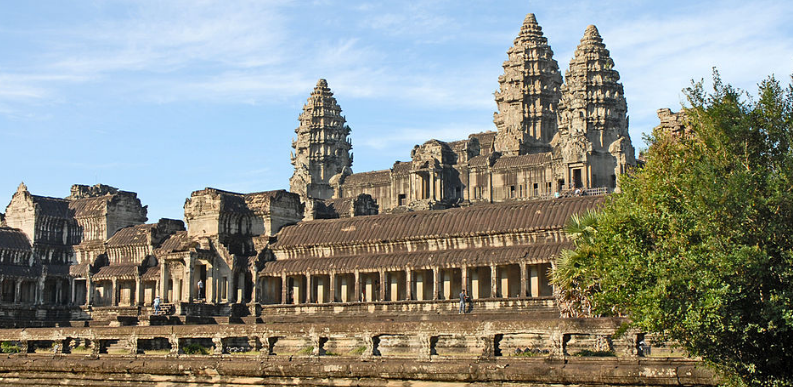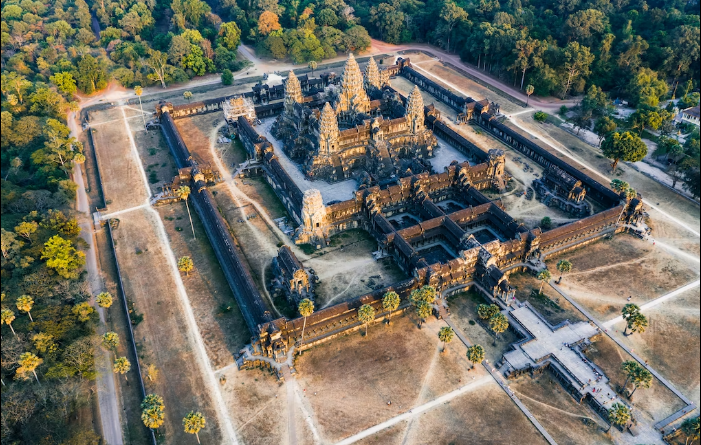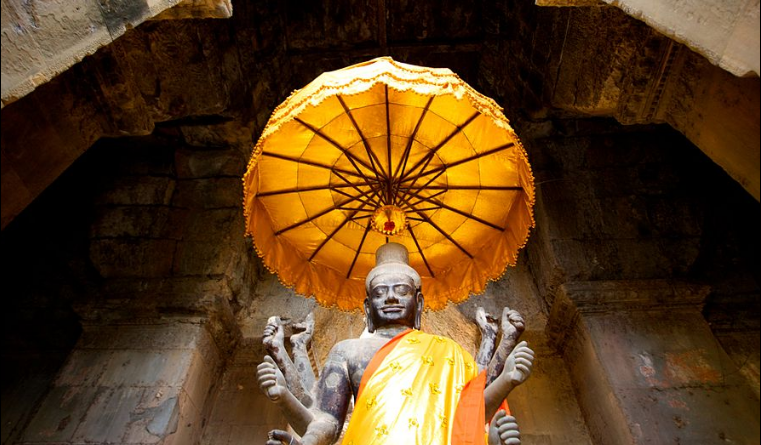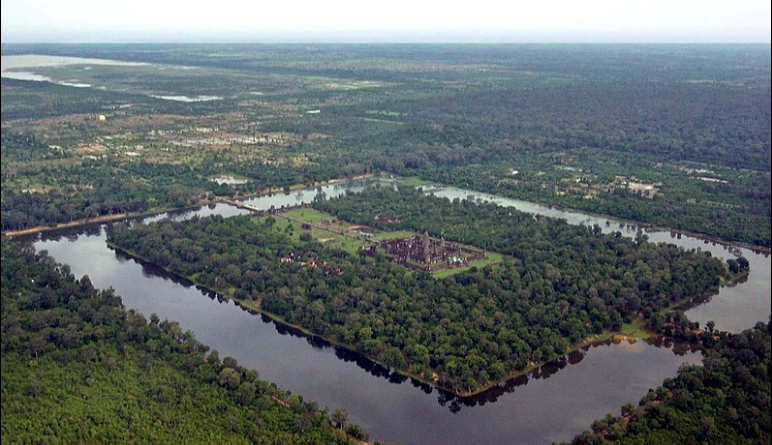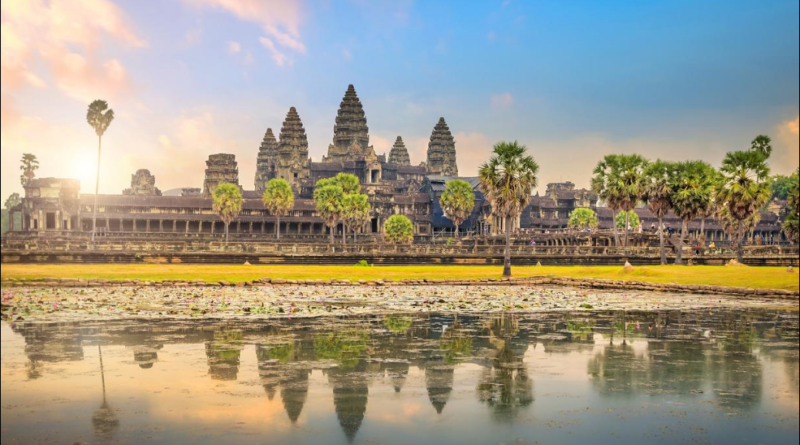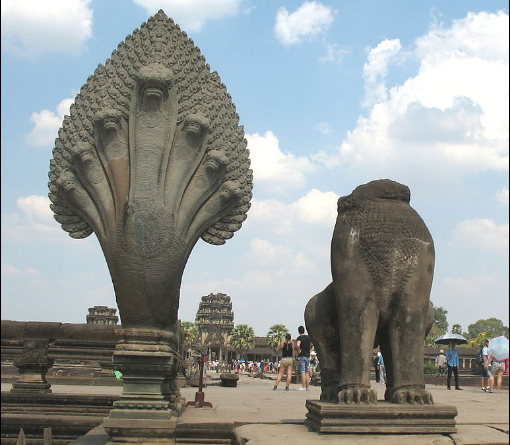Angkor Wat City/Capital of Temples
Angkor Wat (/ˌæŋkɔːr ˈwɒt/; Khmer: អង្គរវត្ត, Sanskrit: अकुंर वट “City/Capital of Temples”) is a temple complex in Cambodia and is the largest religious monument in the world, on a site measuring 162.6 hectares (1,626,000 m2; 402 acres). Originally constructed as a Hindu temple dedicated to the god Vishnu for the Khmer Empire by King Suryavarman II during the 12th century, it was gradually transformed into a Buddhist temple towards the end of the century; as such, it is also described as a “Hindu-Buddhist” temple.
Angkor Wat was built at the behest of the Khmer King Suryavarman II in the early 12th century in Yaśodharapura (Khmer: យសោធរបុរៈ, present-day Angkor), the capital of the Khmer Empire, as his state temple and eventual mausoleum. Angkor Wat combines two basic plans of Khmer temple architecture: the temple-mountain and the later galleried temple. It is designed to represent Mount Meru, home of the devas in Hindu mythology: within a moat more than 5 kilometres (3 mi) long[6] and an outer wall 3.6 kilometres (2.2 mi) long are three rectangular galleries, each raised above the next. At the centre of the temple stands a quincunx of towers. Unlike most Angkorian temples, Angkor Wat is oriented to the west; scholars are divided as to the significance of this. The temple is admired for the grandeur and harmony of the architecture, its extensive bas-reliefs, and for the numerous devatas adorning its walls. The modern name Angkor Wat, alternatively Nokor Wat, means “Temple City” or “City of Temples” in Khmer. Angkor (អង្គរ ângkôr) meaning “city” or “capital city”, is a vernacular form of the word nokor (នគរ nôkôr), which comes from the Sanskrit/Pali word nagara (Devanāgarī: नगर). Wat (វត្ត vôtt) is the word for “temple grounds”, also derived from Sanskrit/Pali vāṭa (Devanāgarī: वाट), meaning “enclosure”.
The original name of the temple was Vrah Viṣṇuloka or Parama Viṣṇuloka meaning “the sacred dwelling of Vishnu.”. The literal translation of the name Ankur Vat in Sanskrit(अकुंर वट) is “Temple of Blossoms” or “Temple of Flower Buds”
History
Angkor Wat lies 5.5 kilometres (3+1⁄2 mi) north of the modern town of Siem Reap, and a short distance south and slightly east of the previous capital, which was centred at Baphuon. In an area of Cambodia where there is an essential group of ancient structures, it is the southernmost of Angkor’s main sites.[citation needed]
The construction of Angkor Wat took place over 28 years from 1122 – 1150 CE during the reign of King Suryavarman II (ruled 1113 – c. 1150). A brahmin by the name of Divākarapaṇḍita (1040 – c. 1120) was responsible for urging Suryavarman II to construct the temple. All of the original religious motifs at Angkor Wat derived from Hinduism. Breaking from the Shaiva tradition of previous kings, Angkor Wat was instead dedicated to Vishnu. It was built as the king’s state temple and capital city. As neither the foundation stela nor any contemporary inscriptions referring to the temple have been found, its original name is unknown, but it may have been known as “Varah Vishnu-lok” after the presiding deity. Work seems to have ended shortly after the king’s death, leaving some of the bas-relief decoration unfinished. The term Vrah Viṣṇuloka or Parama Viṣṇuloka literally means “The king who has gone to the supreme world of Vishnu”, which refer to Suryavarman II posthumously and intend to venerate his glory and memory.
In 1177, approximately 27 years after the death of Suryavarman II, Angkor was sacked by the Chams, the traditional enemies of the Khmer. Thereafter the empire was restored by a new king, Jayavarman VII, who established a new capital and state temple (Angkor Thom and the Bayon, respectively), a few kilometers north, dedicated to Buddhism, because the king believed that the Hindu gods had failed him. Angkor Wat was therefore also gradually converted into a Buddhist site, and many Hindu sculptures were replaced by Buddhist art










